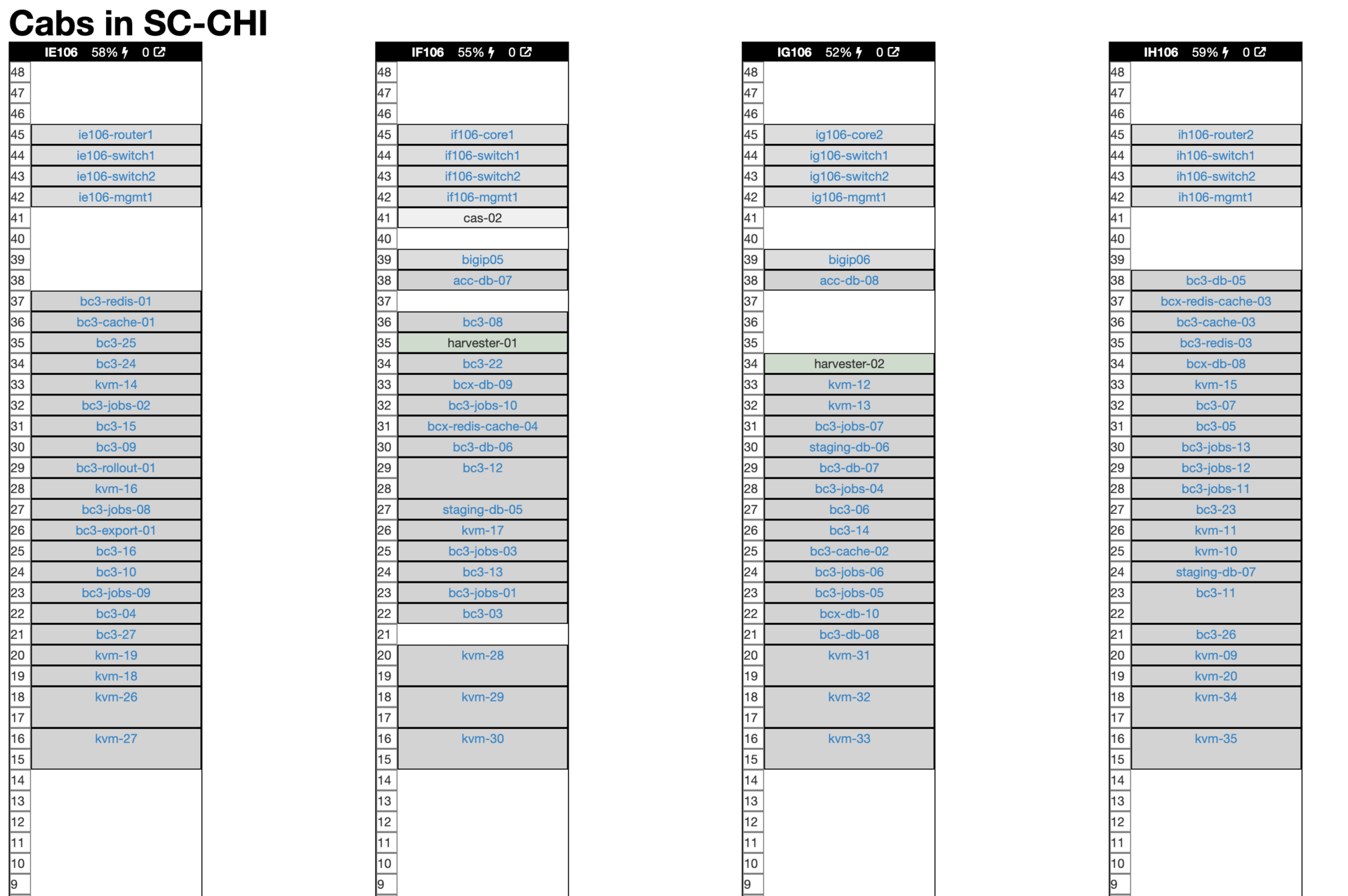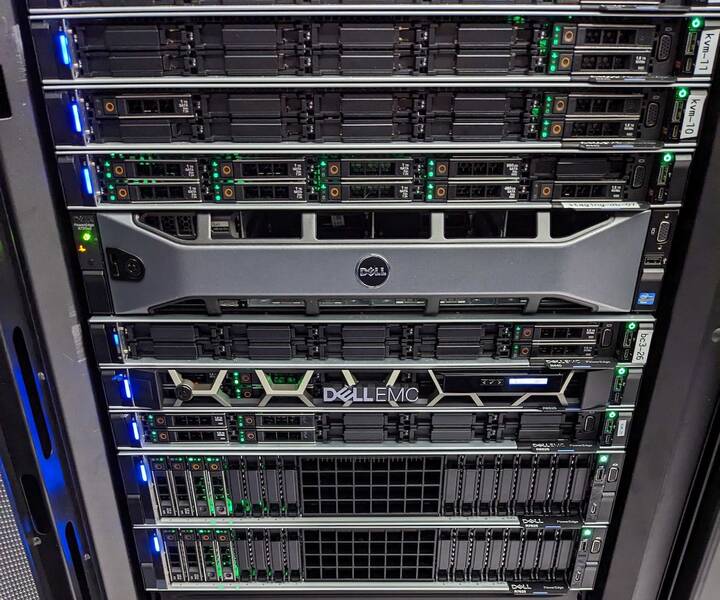I read 'The Challenger Sale. book by authors 'Brent Adamson' & 'Mathew Dixson.' Its a great read and I recommend any B2B technology seller to read and finetune your selling techniques.
My draft summary notes from my read.
The Sales Personas can be categorized under 5 types namely
1. The Hardworking
2. Lone Wolf
3. Relationship Guy
4. The Reactive Seller
5. The Challenger Seller
Key Attributes of the Challenger Seller
1. Rep offers a unique perspective.
2. Two-way communication
3. Knows Customer value drivers.
4. Know Customer Economic Drivers
5. Rep is comfortable discussing money.
6. Cas push the customer.
The Challenger Seller does the following things.
1. Teach
2. Tailor
3. Take Control
In a complex Sale situation, almost 40% of the Challenger Sellers are star performers.
Principles of the challenger sale model:
1. Challengers are made and not born.
Right tools, training, and rewards – Sales reps can be trained.
2. Its combination of skills matter the most.
a. Use in combination Teach, Tailor and Take control.
3. Challenging is about the Organization's capabilities and not the individual reps.
a. Teaching material, frameworks
b. Tailor – The organization can leverage business intelligence, which teaching will resonate will which customer.
c. Taking Control – This is the rep’s skill.
4. It’s a journey to build a challenger sales force
Does the challenger selling mode work?
Teaching for Differentiation
1. Teach customer something new about how to compete in the market.
2. New perspectives
3. Getting ahead of RFP. Reshape RFP. Happy to construct the RFP.
Tailoring for resonance:
1. Tailor the message to individual customers, and personal economic drivers, craft customized messages
Taking Control of the Sale:
- Being assertive doesn’t mean being aggressive. Doesn’t give to customer’s demand of discounts. Brings back discussion to value. (Example: If the customer is asking for price discounts, relook at all your features, and ask customers to rank these features in order of priority)
- You can’t be an effective teacher if you can’t push your customers.
- Take control of customer discussions with a specific end in mind.
- In situations where the customer is risk-averse and prefers the status quo, the ability to take control can be a game changer.
Sales Innovation is specific to individual deals.
Teaching for Differentiation
Why do insights Matter?
1. Discover the customer’s pain (Asking questions, and probing do not work perfectly as thought).
a. Tell Customers what they need. Challengers better understand the customer’s world and teach customers what they don’t know.
Loyalty:
The product can be great, customer service is world-class, and the brand is great, but the competition provides the same level.
Customers focus on general similarities between the competition.
- 38% attribute loyalty to the brand, customer service, and product features.
- Only 9% of loyalty is attributed to lower prices. Today’s discounts won’t get you business for tomorrow.
- Customers value sellers who provide incredibly valuable information and conversations with customers. Outperform in the sell over competitors.
Power of Insight
Attributes Customers rate higher than other
- Rep offers unique and valuable perspectives on the market
- Rep helps navigate alternatives
- Rep provides ongoing advice/consultation
- Avoid potential landmines
- Rep educates the customer on new issues and outcomes
- Supplier is easy to buy from
- The supplier has widespread support across the organization
- Align this to customers’ needs to reduce costs, increase revenue, penetrate new markets, and mitigate risks which customers didn’t even know.
- Need for consensus among the customers before the purchase. Network advocacy along the way to gain support.
- Sale has to be simple and not complicated. Don’t make your customer work hard.
- Customers value the rep’s teaching skills (great insights) more than the discovery skills.
Commercial Teaching:
1. Lead to your unique strengths
- Share unique insights
- Tie back to your capability, where you outperform your competitor. <Seller should always ask. Why should customers buy from us?>
2. Challenge customers' assumptions
- Find the connection between Insight and the customer. Your insights should challenge their assumptions, which they haven’t considered before.
- Reframe the data in front of customers, how they operate, and help them navigate. Thoughtful reflection from customers validates the reframing of customer issues.
- Help customers see things differently.
3. Catalyze action.
- Get the customer to act. Customers easily lose focus. Make customers realize why action matters.
- Convince customers how your solution provides incremental value.
- Best ROI -> Cost incurring by failing to act on opportunities we just talked which customers overlooked. What they are losing against what they will gain.
4. Scale across customers
- Think about customer segmentation.
- Identify customers by needs.
Six Steps of building a Teaching pitch
1. The Warmer: (Build credibility, shared experience, common challenges). Hypothesis bases selling.
- a. Assessment of customers’ key challenges at similar companies, benchmarking data. Demonstrate that they are not alone.
- b. Ask for their reactions.
- c. Cuts the chase. It shows you have done the homework
2. The Reframe: (Tell customer New insights)
- a. Introduce a new perspective and connect with a bigger problem, bigger opty
- b. Insight itself. Headline. (Customer reaction: Huh, I haven’t thought about this). If you fail to provide unique insight, you fail to provide unique value.
- Surprise customer. Make them curious.
- Alternate view
3. Rational Ground: (Build Business Case, why that matters)
- Data/Graphs/charts to justify the hidden cost and size of the opty they have lost.
- Make them feel like they are drowning. Create Fear.
4. Emotional Impact: (Make it personal. How nearly every company acts)
- The customer should be able to apply.
- How do we get out of we are diff.
- Make an emotional connect. Customers should see it as their story
- It’s about the narrative. How other customers went through a similar path.
5. A New Way (Paint the picture. How Ranger can help.)
- Convince the customer of the solution.
- It’s about the solution.
- Behaving diff will change life.
6. Your Solution:
- How is your solution better
- How you can lay out the solution.
When does the supplier enter the conversation?
How do you build a commercial Teaching Organization?
Create a logical path. What’s currently costing customers more money than they realize which we can help them fix.
Inputs from organizations to Sellers
1. Provide customers with game-changing insights
2. Specifying and personalizing the impact
3. Introducing the capabilities as the best means to solve the problems
Commercial Teaching:
Team sport
· Sales & Marketing Alignment
· Marketing has tools to generate insights. Marketing must serve as insight generating machine to equip reps.
· Sales must ensure reps know to use that insight.
1. Identify unique benefits.
2. Develop commercial insights that challenge customer thinking.
3. Package commercial thinking into compelling messaging
4. Equip reps to challenge customers.
The single biggest opportunity is not the solutions and the services you sell, but the quality of insights you deliver as part of the sale.
Tailoring for Resonance
Helps with the broader consensus among the organization.
53% of B2B of Loyalty – How do you sell than what you sell.
Decision Makers:
Senior Executives and the Procurement.
What matters to decision makers. Aspects of the sale process. They buy from organizations.
Widespread support across my organization to my decision-makers. Easy to buy from, accessible. Work with most of the stakeholders in the customer organization. Decision Maker values the team’s inputs.
Senior Execs place a higher value on Reps Knowledge, and Procurement place a higher value on reps not overcharging.
Identify, and nurture key stakeholders.
Consensus Sale:
Understand what drives loyalty to the team and not only the senior executives.
The biggest influencer on end-user loyalty is on Rep’s professionalism. Underpromise and over-deliver.
The ability of the rep to provide a unique value prop. Educate customer.
Educating the end users, and influencers, providing insights and helping them reduce cost and increase revenue makes them advocate your solution.
The link between the influencer/Stakeholder and the decision-maker is significantly stronger.
One of the conventional ways to build loyalty is to elevate the conversation to the C-suite. Suppliers should have widespread support across the organization.
The best way to sell is not to approach the decision maker directly, but by approaching indirectly through the established stakeholders to ensure widespread support. The stakeholder has greater leverage over influencing the decision-maker than the supplier rep.
Tailoring the Message:
· Talk to more people/stakeholders in consensus-making buying to achieve maximum resonance.
· Start at the Customer’s industry, company, and role and then down to the person. Marketing can add value. Any merger, customer gaining share, regulatory, press releases and earning reports
Reducing variability:
·
Tailor: Talk to more people to get the buy-in. How exactly tailor the message?
Start with the product, the person’s industry/company and to the personal level (personal goal’s and objectives).
Rep needs to know multiple things to tailor the message effectively. Personality, role, region
Knowledge of individual stakeholder’s value drivers
And economic drivers of end user’s business
Focus not on what the end user is selling, but on what he is trying to achieve. Focus on the individual’s most pressing needs.
Tailoring Tools. Marketing and Sales can provide the same to reps.
Tailoring Cheat Sheets.
Capture end user’s (specific role) specific objectives, goals, and regular questions asked.
Provide tailored product bundles.
Template capturing the end user-specific outcomes.
Taking Control of the Sale:
Hold value and maintain the momentum of the sales process.
Challengers always think of the next steps. The goal is to sell deals, moving ahead. Create urgency.
Three Misconceptions:
1. Taking control is synonymous with negotiation.
- It’s not about negotiation but about the entire sales process.
- Many times optys are veiled optys and buyer gets into discussions with buyers. The customer doesn’t have any intention of buying. Challenger sellers can sense this, if they are not granted access to the senior exec. They move away. Time is better spent anywhere.
- Its important to gauge is they have access to the senior folks initially.
- Challengers understand the buyer’s goals and objectives and biases. They map out what the stakeholders care about and why they care about it.
2. Reps take control only in matters of money.
- Reps take control and educate the customer on the challenges customer faces and solutions to the challenges. They reframe the customer’s world.
- On Buyer’s skepticism and push back stating their company is diff, the challenger pushes back on the customer acknowledging buyers company is diff just like all organizations seller works with. Challenger brings new ideas to the table.
3. Reps will become aggressive.
- Negotiate, stay your ground, and explore avenues to discuss and convince customer on the rationale.
Taking Control:
Challengers thrive in ambiguity. They like tension. We look for excuses to avoid them.
Dupont Negotiation tactics:
Purposeful planning: Do in advance of the sales.
Situation Sales Negotiation. (SSN) Template
Planning
1. List all We have strengths and areas where we have weaknesses.
2. All information needed from the customer.
3. Ask all questions to be asked.
4. Information customers may be likely to ask.
5. Difficult questions which may be asked and responses.
6. List of possible concessions to be given. List of customer demands to be made.
Winning such conversations is what differentiates the challengers. They have the scorecard wired into their brain.
High-performing sales reps spend a significant amount of time planning. Not on the current move but think steps ahead of the buyer.
Sales reps must learn to challenge customers and push back.
Anatomy of successful negotiations
4-Step Framework (by Dupont)
1. Acknowledge and differ
- E.g. Price discounts without threatening the deal (I understand price is what needs to reduce, but before we do that we completely understand all your needs to be done so that we can do all we can)
- Rep has bought some time. He has also promised the closure.
- Don’t come across as aggressive.
2. Deepen and broaden
- Reps are given tactics to understand customers’ underlying additional needs.
- Expand customer’s view important to them
- Customers to restate things which customer likes
- What are you trying to achieve with the desired discount?
3. Explore and compare
- Reps are given tactics to explore additional needs
- The primary idea is to expand customers' view of the things important to them
- What else besides price matters? Warranty, expedited shipping, and installation.
- What are you trying to achieve by 10% reduction?
- Often the requirement can be achieved by offering something else.
- Supplier creates value and provides additional value.
4. Concede according to the plan.
- Reps are taught to trade carefully with low-value solution elements before getting to the price.
- What is the seller willing to concede?
- How and when?
- Avoid certain concessions (start with small and then get too big as the concessions progress) or take or leave it. The customer feels cheated.
- Start with meaningful concessions. Give concession patterns.
Taking control happens throughout the discussion. Making powerful requests shows seriousness.
Overcome passivity: Teach reps about clarity of direction over quick closure. Create real value in the sales process.
Manager and Challenger selling Model:
Front line sales manager needs to be onboarded else the initiative will fail. The manager is the fundamental link between strategy and execution.
World-class Sales Manager:
Analyzed data on the following four parameters.
A>
1. Management Fundamentals (Integrity, reliability, recognition, team building, listening skills)
a. Accounts for 25% of Sales manager success
b. Great reps don’t necessarily make a great manager.
c. Find a new position that meets these abilities and screen up front.
B>
Sales (Account planning, Territory management, Level of innovation manager shows in positions offering).
Account for 75% of sales m manager's success
a.
b. Selling
c. Coaching
d. Owning: Running their territory as if it was their own business
2. Attributes related to actual selling Ability (Negotiation skills, and unique perspective).
a. Commander’s intent. Stop giving step-by-step instructions.
b. Be a rep when needed.
c. These attributes fall under three categories (Selling, coaching, and owning)
3. Coaching skills (Follow through on development commitments).
a. Accounts for 28% success.
b. Leadership, Providing guidance. Demonstrate ownership of the business.
Sales Leadership is about how innovative sales managers are. Sales Innovation: What’s holding up the deal, and then finding creative ways to move forward. When and why the deal is running into trouble.
29% attributed to the manager’s success.
Best Manager comes from the Challenger category.
Sales Coaching:
Formalized Sales coaching improves sales rep performance in complex sales processes.
Design, diagnose and reinforce behaviour specific to the individual.
Coaching is ongoing; training is one-off.
Coaching is customized to the rep’s individual needs.
Effective coaching is formal, structured and regularly scheduled.
Sales Innovation:
Three key Sales Innovation activities:
1. Investigate:
a. to determine what’s blocking the sales, who’s involved, What decision criteria they will consider, what kind of financial concerns may get into our way
b. Map customer’s decision-making process for any given deal which are stalled somewhere along the line
c. Many times customers aren’t sure about the decision-making process
2. Create Sales Solutions (innovative sales solutions). It’s not deal inspection Position Rep’s capabilities to better connect with supplier’s challenges.
a. Shipping risks from customer to supplier for long terms contracts for long term contracts
b. Cross sale optys
c. Co-creation, thought partnership, working collaboratively.
d. Focus on deals where the stakes are high.
3. Share
a. Replicate the innovation somewhere. Get scale from the efforts
b. Develop and sustain strong relationships inside the organization
c. Passing new ideas to the rest of the team
Roles and Conflict
Efficiency focus (Territory management, resource allocation, right reps, right customer) vs effectiveness Focus
Effectiveness focus is twice impactful as compared to efficiency focus.
Innovation is the ability to thrive in the unknown world.
Helping managers to understand their biases
Opening thinking, alternative thinking.
1. Practicability bias: unrealistic ideas should be eliminated
2. Confirmation Bias: Unexplainable customer behaviours can be ignored
3. Exportability Bias: If it didn’t work here, it wouldn't work anywhere
4. Legacy Bias: The way we have always done it. It must be best
5. First Conclusion Bias: First offered solution must be the best.
6. Personal bias: I won't buy it, and the customer won’t buy it either.
Prompting Questions: (THE SCAMPER Framework. Brainstorming)
Expand ideas. What to do next?
What else can be going on
What might be a substitute?
What ideas worked elsewhere can be considered?
What’s CFO, marketing must be thinking?
Questions set aside practicality: what would you do diff if you had more budget?
Holding biases.
Implementation Lessons from the early adapters:
















